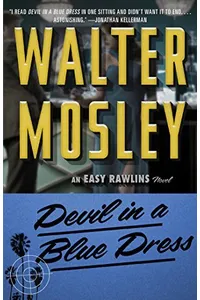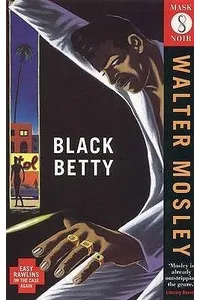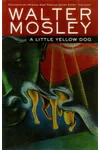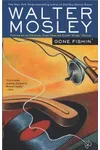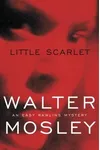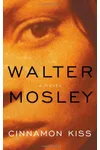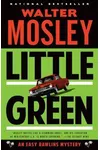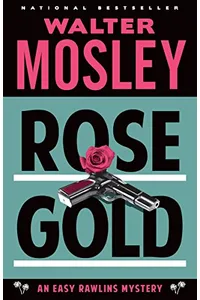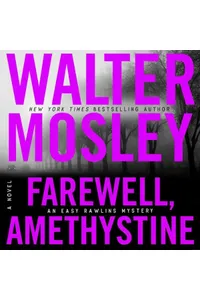Step into the smoky, jazz-filled streets of mid-20th century Los Angeles, where Ezekiel 'Easy' Rawlins, a sharp-witted African American private investigator, unravels mysteries steeped in crime and racial tension. Walter Mosley’s Easy Rawlins series, a cornerstone of hard-boiled detective fiction, blends gritty noir with a vivid exploration of Black life in a divided America, captivating readers with its raw honesty and thrilling plots.
From his debut in 'Devil in a Blue Dress' to his later adventures in 'Rose Gold,' Easy Rawlins navigates a world where danger lurks in every shadow, and justice is never black-and-white. With a World War II veteran’s resilience and a knack for solving cases the police won’t touch, Easy’s story is as much about survival as it is about sleuthing.
How Easy Rawlins Began
In 1990, Walter Mosley introduced Easy Rawlins in 'Devil in a Blue Dress,' inspired by his love for classic noir authors like Raymond Chandler and his desire to center African American experiences in the genre. Born in Los Angeles to a Jewish mother and African American father, Mosley drew from his own background to craft a detective who confronts systemic racism while cracking cases. The series, set in the racially charged Watts neighborhood, grew from Mosley’s vision to weave social commentary into pulse-pounding mysteries.
Mosley’s breakthrough came when 'Devil in a Blue Dress' caught the eye of readers, including future president Bill Clinton, and was adapted into a 1995 film starring Denzel Washington. This success launched a series that now spans 16 novels, each building on Easy’s complex life and the turbulent history of post-war America.
The Heart of Easy Rawlins
The series kicks off with 'Devil in a Blue Dress' (1990), where Easy, a jobless veteran, takes a shady gig to find a missing woman, Daphne Monet, only to uncover a web of blackmail and murder. In 'A Red Death' (1991), Easy tangles with the FBI and a communist scare, exposing the era’s paranoia. 'Black Betty' (1994) sees him searching for a seductive housekeeper tied to a wealthy family’s secrets, while 'Little Green' (2013) follows Easy’s resurrection from near-death to probe the psychedelic Sunset Strip.
Mosley’s novels pulse with themes of racial injustice, resilience, and moral ambiguity. Easy, a self-educated everyman, navigates a Los Angeles where corruption festers in both high society and the streets. His friendships—with the volatile Mouse Alexander and other vivid characters—add depth, while the series’ noir style, laced with sharp dialogue and vivid settings, evokes the grit of 1940s–1960s America. Unlike traditional detectives, Easy’s unlicensed status and outsider perspective make him a unique lens on a divided society.
The series evolves with Easy’s personal life—his adopted children, fleeting romances, and struggles with identity—mirroring the broader fight for civil rights. Each book stands alone but together forms a rich tapestry of a Black man’s quest for dignity in a world stacked against him.
Why Easy Rawlins Resonates
The Easy Rawlins series redefined detective fiction by centering an African American protagonist whose cases double as critiques of systemic racism. Mosley’s blend of historical insight and hard-boiled suspense earned him accolades, including the 2020 National Book Foundation Medal for Distinguished Contribution to American Letters, making him the first Black man to receive the honor. Fans and critics alike praise the series for its unflinching look at race and its gripping narratives, often comparing Mosley to Chandler and Dashiell Hammett.
Easy’s enduring appeal lies in his humanity—he’s no superhero, just a man making tough choices in a tough world. His stories remain relevant, reflecting ongoing struggles for justice and equality, while offering a thrilling escape into a bygone era. The series’ cultural impact, from inspiring TV pilots to shaping modern crime fiction, cements its place as a literary landmark.
- First Book: 'Devil in a Blue Dress' (1990)
- Total Books: 16, ending with 'Farewell, Amethystine' (2024)
- Awards: Edgar Award, NAACP Image Awards, and more
- Setting: Watts, Los Angeles, 1940s–1960s
Grab 'Devil in a Blue Dress' and dive into Easy Rawlins’s world of mystery, where every case is a fight for truth in a city that hides its secrets well!
